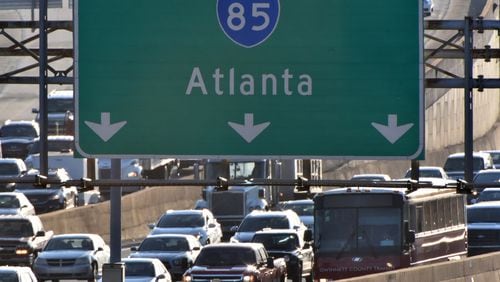The substantial heft of something whole can sometimes be hidden in and around its various parts.
That’s an illuminating way to assess transit efforts at this point in metro Atlanta. It efficiently sweeps in public policy as well as pieces undertaken by local, county and state government to improve the speed and ease at which we can move around this big, congested region.
The tally of active mobility-boosting efforts is an impressive one, especially considering the gloom that settled over the region for a long time after the defeat of the 2012 T-SPLOST tax vote.
Things look considerably brighter now, thanks to significant changes in both attitude and outlook in influential quarters toward such investments .
>> Another view: Mobility, collaboration can lead to prosperity
The Georgia General Assembly deserves kudos for steeling itself to pass important, if controversial, legislation intended to bolster transportation infrastructure. A 2015 increase in fuel taxes set in motion long-overdue construction projects on Georgia’s roads.
On the transit front, lawmakers dipped a big toe into once-risky waters in 2016 by approving $75 million in onetime grants for transit projects statewide.
This year, state legislators passed HB 930, which sets the table for improved coordination and planning of transit in a 13-county region here, under a new joint entity to be called The ATL.
As importantly, the Gold Dome is now open to some direct state participation in funding of transit projects, which was seen as taboo not that long ago.
The benefits of the new law became apparent recently when the state announced $100 million in bond funding toward a proposed Bus Rapid Transit project on the oft-congested State Route 400. The state’s contribution will pay for four new, bus-only interchanges on new toll lanes to be built along SR 400.
>> Another view: Bus rapid transit if best path for Atlanta region
Gov. Deal, in a press release said, “This investment in BRT infrastructure marks the first time that the state, Fulton County and MARTA have partnered together to improve our mass transit system. With this announcement, we are introducing collaborative solutions for both transportation and transit, which is exactly what the ATL and Georgia’s commitment to improving mobility are all about.”
June’s BRT announcement dovetails well with other big, positive news about transit in recent years. Atlanta residents passed a tax increase in 2016 to pay for new rail and BRT lines. Formerly transit-averse Gwinnett County is planning toward a referendum on a tax that would boost transit there. Even Cobb County, home to substantial anti-transit sentiment, is rethinking its stance as other counties work toward transit enhancements.
All of the effort here is driven by the need to create the mobility networks increasingly demanded by Georgia’s job creators and their workers. As such, they make good sense as part of the strategy toward making this place a competitive place to live and do business in the years to come.







